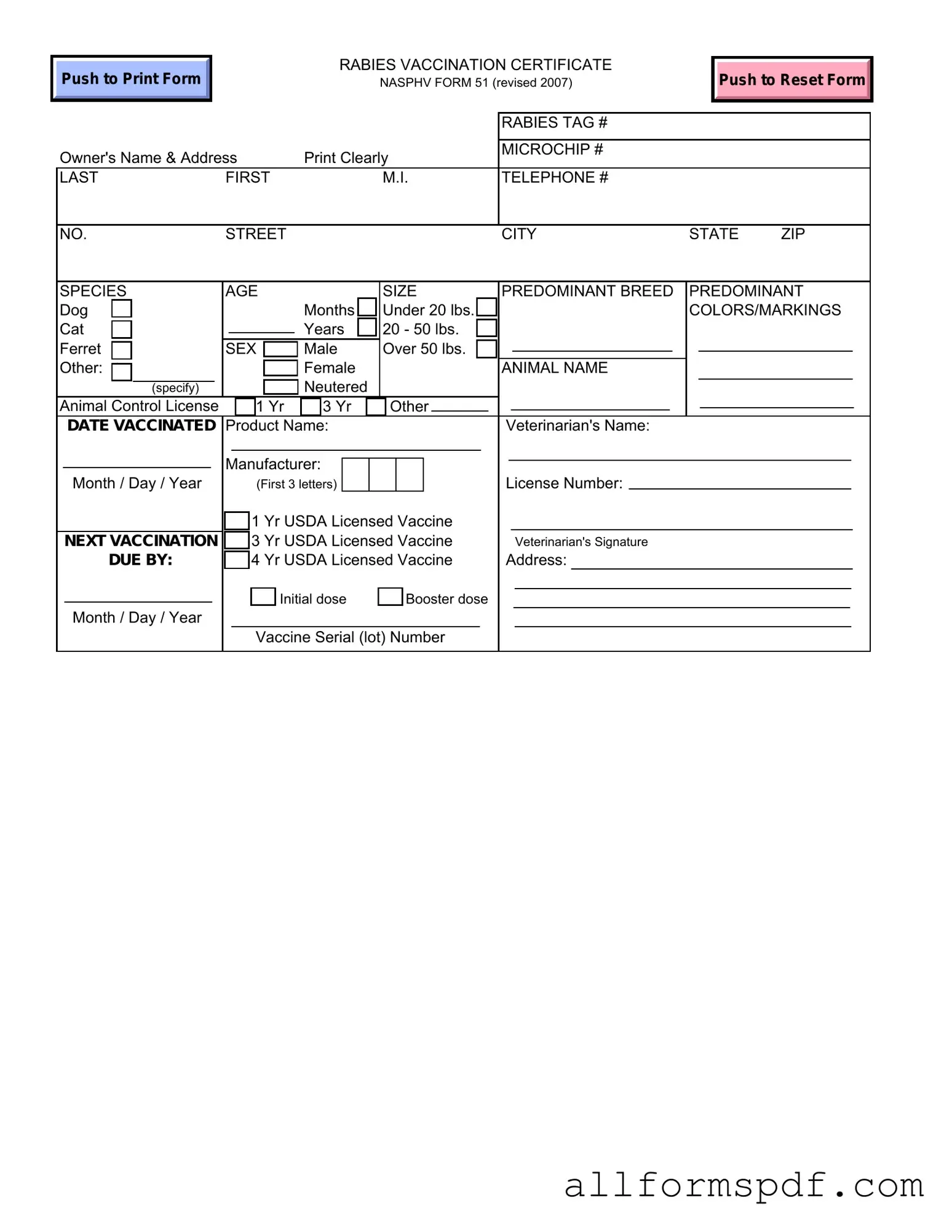When filling out the Rabies Certificate form, individuals often make several common mistakes that can lead to delays or complications. One frequent error is providing unclear or incomplete information in the Owner's Name & Address section. This part of the form is crucial for identifying the pet owner and ensuring that the certificate can be properly linked to the animal. Incomplete addresses can result in issues with registration or notifications.
Another common mistake is neglecting to include the Microchip Number. Many pet owners assume that this information is optional, but it is essential for tracking and identification purposes. Without this number, there may be challenges in reuniting lost pets with their owners.
People also often overlook the Animal Control License section. Failing to indicate whether the animal is licensed can lead to complications in verifying the pet's vaccination status. Proper licensing is not only a legal requirement in many areas, but it also helps ensure public safety.
In the section regarding the Date Vaccinated, individuals frequently make errors by not using the correct format. The form specifies a Month/Day/Year format, and any deviation can cause confusion. This date is vital for tracking vaccination schedules and ensuring the animal receives timely boosters.
Another mistake involves the Veterinarian's Signature. Some individuals forget to obtain this signature, which is necessary for the certificate to be valid. A missing signature can invalidate the entire document, requiring the owner to go back to the veterinarian for a correction.
Lastly, people sometimes fail to check the Next Vaccination Due By date. This oversight can lead to missed vaccinations, putting the animal at risk. Keeping track of vaccination schedules is essential for both the pet's health and compliance with local regulations.
